The 1997 Suzuki Sidekick JX Sport holds a special place in the hearts of automotive enthusiasts. As part of the Sidekick lineup, this compact SUV, without even trying too hard, left a lasting impression on the off-road and urban driving communities.
In this article, we take a look back at the intriguing features and unforgettable experiences that made the Suzuki Sidekick a much-talked-about and respected classic car to this day.
Related Reading: Hidden Gems: 13 Classic and Modern Cars You Didn't Know Exist
Why And When Did They Stop Making The Suzuki Sidekick?
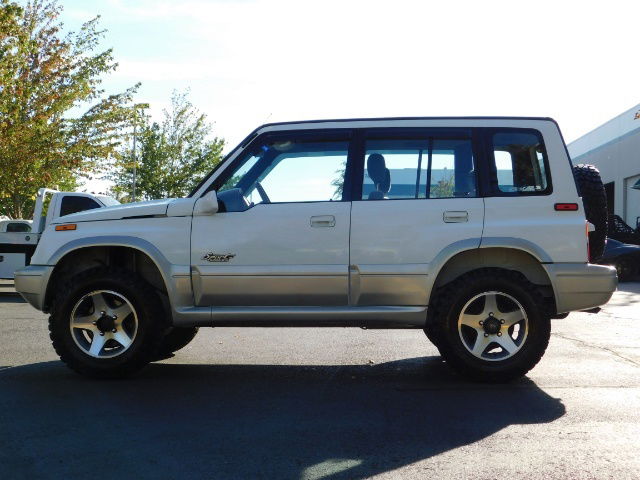
Suzuki stopped making the Suzuki Sidekick in the late 1990s. The primary reason for discontinuation was due to stricter emissions and safety regulations, as well as changes in market demand.
The Sidekick, like many other older SUV models, did not meet the evolving environmental and safety standards enforced in many countries. As a result, Suzuki shifted its focus towards producing newer models that complied with these regulations and catered to changing consumer preferences.
Additionally, market demands were shifting towards larger and more feature-rich SUVs, and the compact SUV segment was becoming increasingly competitive. This led Suzuki to phase out the Sidekick and introduce newer models that better aligned with the market trends and regulatory requirements of the time.
It's worth noting that while Suzuki discontinued the Sidekick in many markets, the vehicle remained popular and got succeeded by models like the Suzuki Grand Vitara in some regions.
The Suzuki Sidekick's Other Names
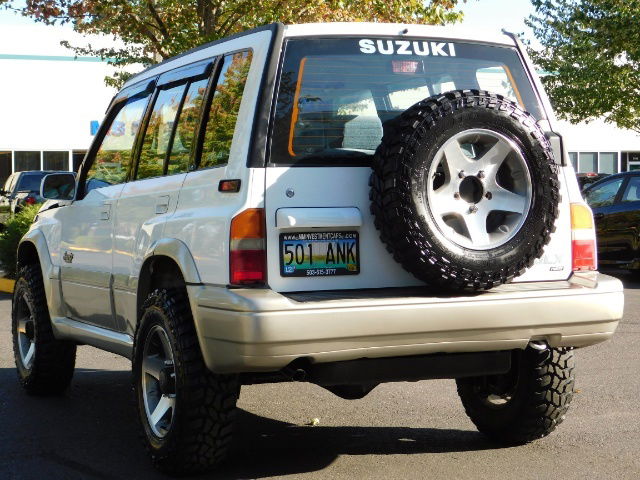
Suzuki marketed the Sidekick under various names in different regions and by different manufacturers. In the United States, the Suzuki Sidekick got sold under the Geo brand as the Geo Tracker. Geo was a General Motors (GM) division, and the Tracker was essentially the same as the Suzuki Sidekick.
In later years, GM phased out the Geo brand, and the same vehicle sold as the Chevrolet Tracker, still under the GM umbrella. In some Latin American countries, the Tracker hit the market as the GMC Tracker, another GM brand.
In Canada, the Asüna brand marketed the Suzuki Sidekick as the Asüna Sunrunner. Asüna was also a GM division. The same vehicle got sold as the Pontiac Sunrunner, another GM brand, in Canada.
In Spain, the Suzuki Sidekick was manufactured and sold by Santana Motor under the names Santana 300 (three-door) and Santana 350 (five-door). These names reflect how the same vehicle was marketed and badged differently depending on the region and the manufacturer responsible for distribution.
How Big Is The Suzuki Sidekick’s Gas Tank?

One of the most perpetual questions people ask about the Sidekick is the size of the gas tank. The frequency of this question makes sense, considering the SUV's off-road capabilities.
Not only does a larger gas tank allow a vehicle to travel a greater distance before needing to refuel, but some vehicles, especially trucks and SUVs, may require a larger tank to support their towing capacity, ensuring you can travel long distances while hauling heavy loads.
The 1997 Suzuki Sidekick JX Sport typically had a gas tank with a capacity of around 11.1 gallons (or approximately 42 liters).
Note that specific models and configurations may have slight variations in fuel tank size, so it's a good practice to consult the vehicle's manual or check with a trusted source to confirm the exact capacity for a particular vehicle. According to Fuelly, the 1997 Suzuki Sidekick gets a combined average mpg of 22.96 with a 0.88 mpg margin of error.
What’s Special About The 1997 Suzuki Sidekick JX Sport?
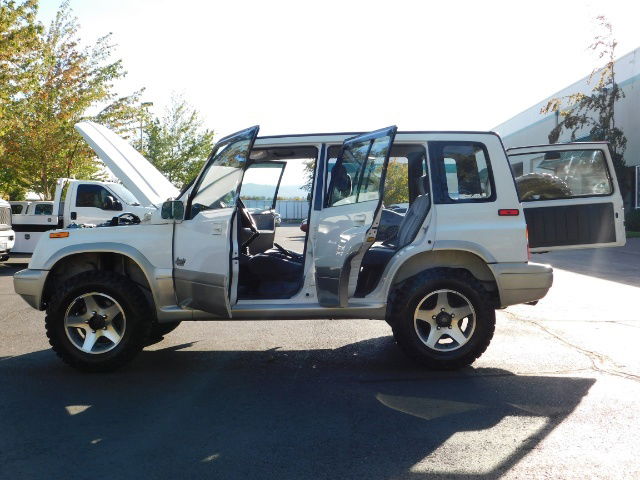
Seeing how popular Sidekick was in the global market, one might wonder why. The JX Sport version of the Sidekick featured a sportier design, setting it apart from others in the same class. With its rounded edges and bold character lines, the Sidekick exuded a sense of fun and adventure.
The two-door design added to its sporty appeal. The Suzuki Sidekick JX Sport was celebrated for its versatility. The compact SUV was, and still is, up for the challenges of tackling rugged terrains or cruising through city streets. With a sturdy chassis and dependable drivetrain, the Sidekick proved its mettle in both on-road and off-road scenarios.
Under the hood, the 1997 Sidekick JX Sport cradled a 1.6-liter 4-cylinder engine that provided ample power for its compact size. The engine's design emphasized fuel efficiency without sacrificing performance. The SUV is confident on various road conditions thanks to an optional 4-wheel-drive system.

One of the Sidekick JX Sport\s standout features was its off-roading prowess bellied in regular SUV aesthetics. Suzuki invigorated it with a part-time 4-wheel drive system and a robust suspension that enabled it to cross rocky trails or fording shallow streams. It didn't take drivers long to realize this compact SUV was an off-road companion you could trust.
The 1997 Suzuki Sidekick JX Sport's compact size made it ideal for urban living. It was perfect for maneuverability through tight spaces. However, despite its compact exterior, the SUV offered a surprisingly spacious interior with seating for up to five passengers. The rear seats could also get folded down to expand cargo space, enhancing its practicality for various lifestyles.
The 1997 Suzuki Sidekick JX Sport had safety features, including dual airbags, anti-lock brakes, and side-impact protection beams. While the Sidekick is considered a classic today, its popularity has endured through the years. Many enthusiasts and collectors still treasure and maintain these vehicles, showcasing their timeless appeal and reliability.
Suzuki Sidekick Common Problems
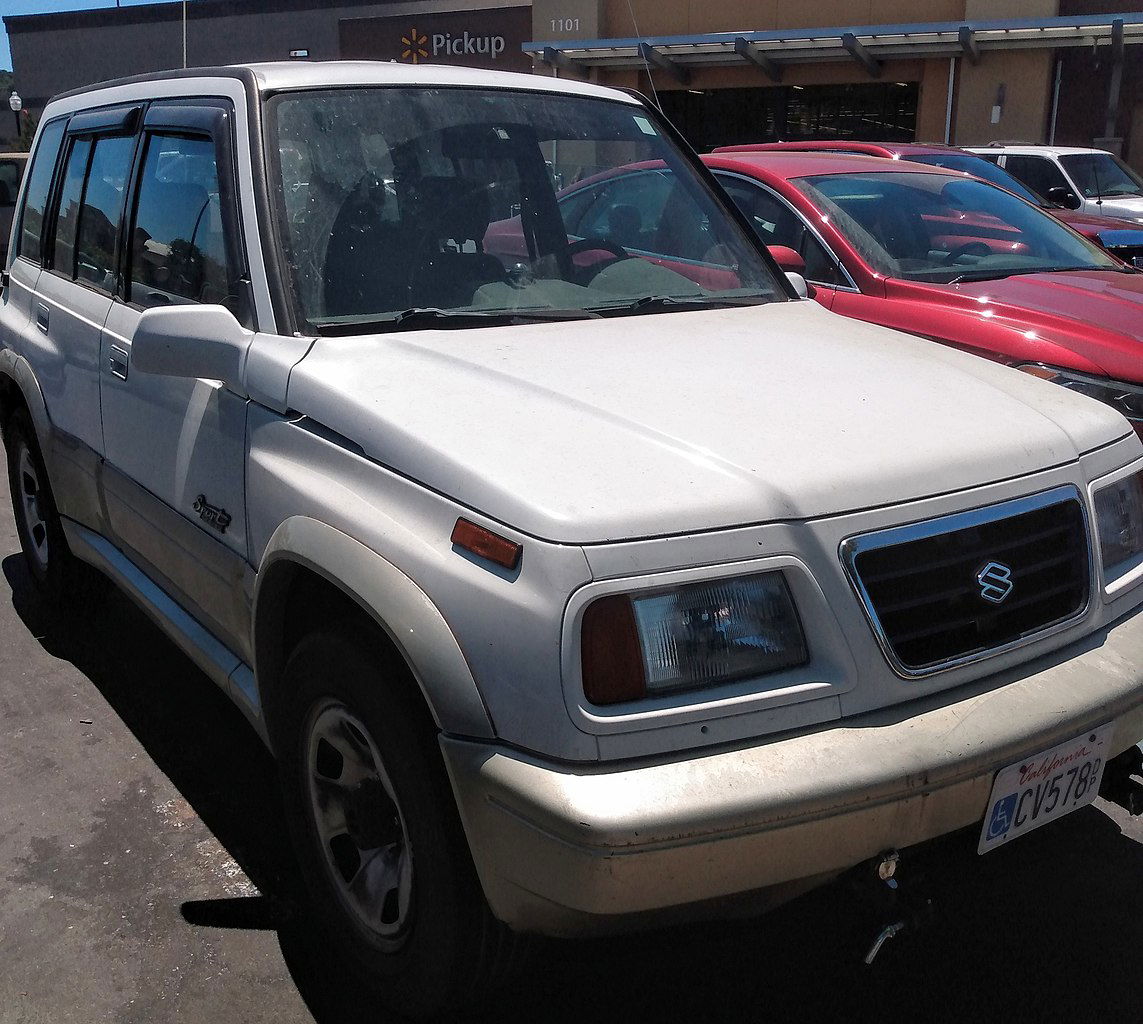
The 1997 Suzuki Sidekick, like any vehicle, had its share of common problems and issues that owners and mechanics reported. Many older Suzuki Sidekicks were prone to rust, particularly in regions with harsh winter climates or exposure to salt on the roads.
Some owners experienced transmission issues, but regular maintenance and fluid changes should prevent transmission problems. Also, oil leaks from the engine or gaskets were relatively common. Electrical problems, such as malfunctioning sensors, fuses, or wiring issues, were also reported by some owners.
There were also reports of clogged fuel filters or issues with the fuel pump. Over time, suspension components and steering parts could wear out, leading to issues like wobbly steering or a rough ride.
Note that the prevalence of these problems can vary depending on factors such as the vehicle's maintenance history, usage, and regional conditions. Regular maintenance, proper care, and addressing issues promptly can mitigate many of these common problems.
The Controversial Safety Report
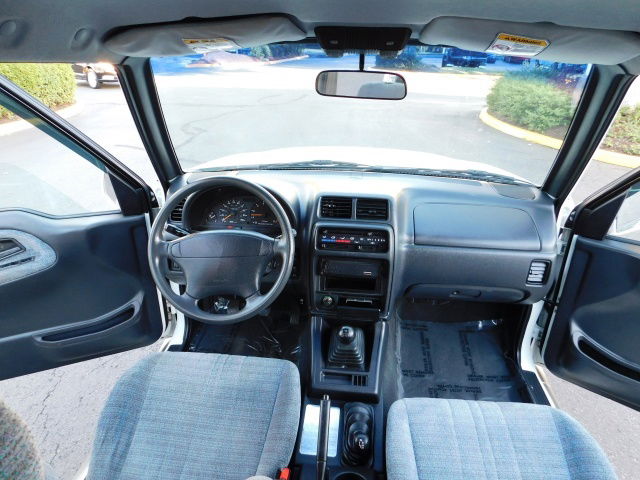
According to a 1995 report conducted by the Insurance Institute for Highway Safety (IIHS), the 1991-1993 two-wheel drive Geo Tracker exhibited a concerning trend with 21 driver fatalities for every 66,210 registered vehicles, marking the highest reported incidence at 3.2 fatalities per 10,000 vehicles.
Interestingly, the Geo Tracker's 4x4 version had a relatively lower fatality rate, with 48 driver fatalities for every 271,355 registered vehicles, equating to 1.8 fatalities per 10,000 vehicles. In the broader context of the small utility vehicle class, the IIHS study found a total of 366 driver fatalities for 2,144,891 registered vehicles, resulting in a more moderate rate of 1.6 fatalities per 10,000 vehicles.
However, we will quickly point out that this study faced substantial criticism due to flawed comparisons. Notably, it failed to distinguish between two-door and four-door models of the Geo Tracker, a significant oversight.
A subsequent IIHS study offered a clearer perspective, demonstrating that two-door Trackers displayed a slightly below-average injury rate, whereas the four-door models outperformed the average for utility vehicles in terms of safety.
Finding A 1997 Suzuki Sidekick JX Sport For Sale
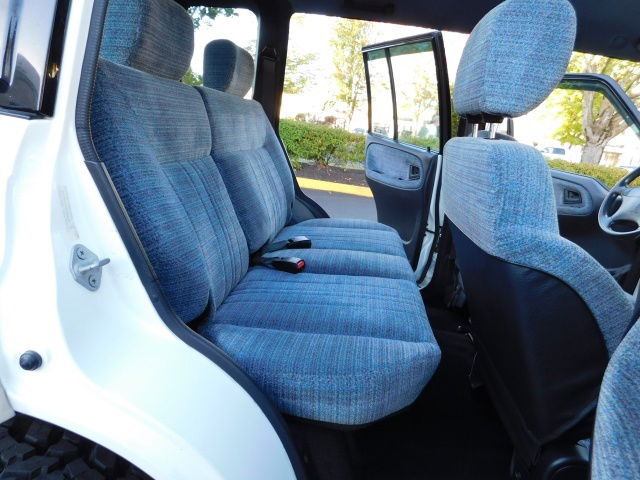
If you're interested in owning this classic SUV, finding one may require some patience and dedication. Online marketplaces, classic car dealers, and auto auctions can be potential sources to explore.
We found a 1998 model listed on Edmunds for $8,000 at the time of writing. According to JD Power, the average retail price for a used 1997 Suzuki Sidekick JX is $3,400. When buying a used Sidekick JX Sport, we recommend inspecting it for any signs of wear and tear and consider having a trusted mechanic examine the vehicle's condition.